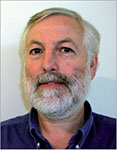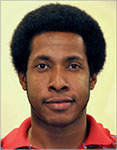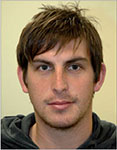Cenozoic post-breakup compressional deformation and exhumation of the southern Australian margin
Simon Holford A , Richard Hillis B , Ian Duddy C , Paul Green C , Martyn Stoker D , Adrian Tuitt E , Guillaume Backé E , David Tassone E and Justin MacDonald EA University of Adelaide
B Deep Exploration Technologies Cooperative Research Centre
C Geotrack International
D British Geological Survey
E University of Adelaide
The APPEA Journal 51(1) 613-638 https://doi.org/10.1071/AJ10044
Published: 2011
Abstract
We present results from a margin-wide analysis of the history of post-breakup Cenozoic compressional deformation and related exhumation along the passive southern margin of Australia, based on a regional synthesis of seismic, stratigraphic and thermochronological data. The Cenozoic sedimentary record of the southern margin contains regional unconformities of intra-Lutetian and late Miocene–Pliocene age, which coincide with reconfigurations of the boundaries of the Indo-Australian Plate. Seismic data show that post-breakup compressional deformation and sedimentary basin inversion—characterised by reactivation of syn-rift faults and folding of post-rift sediments—is pervasive from the Gulf St Vincent to Gippsland basins, and occurred almost continually since the early- to mid-Eocene. Inversion structures are absent from the Bight Basin, which we interpret to be the result of both the unsuitable orientation of faults for reactivation with respect to post-breakup stress fields, and the colder, stronger lithosphere that underlies that part of the margin. Compressional deformation along the southeastern margin has mainly been accommodated by reactivation of syn-rift faults, resulting in folds with varying ages and amplitudes in the post-rift Cenozoic succession. Many hydrocarbon fields in the Otway and Gippsland basins are located in these folds, the largest of which are often associated with substantial localised exhumation. Our results emphasise the importance of constraining the timing of Cenozoic compression and exhumation in defining hydrocarbon prospectivity of the southern margin.

Simon Holford is an ARC Australian Postdoctoral Fellow and lecturer at the Australian School of Petroleum and is Deputy Director of the Centre for Tectonics, Resources and Exploration (TRaX) at the University of Adelaide. He graduated with a BSc (Hons) from Keele University (2001) and a PhD from the University of Birmingham (2006). His research interests are in the deformation, uplift and magmatic evolution of rifted margins, sedimentary basins, and continental interiors and their impact on hydrocarbon exploration. Member: AGU, ASEG, GSA, GSL and PESA. simon.holford@adelaide.edu.au |

Richard Hillis is CEO of the Deep Exploration Technologies CRC. He graduated with a BSc (Hons) from Imperial College, London (1985), and a PhD from the University of Edinburgh (1989). Until recently, he was the State of South Australia Professor of Petroleum Geology and Head of the Australian School of Petroleum at the University of Adelaide. He has published over 100 papers in the areas of petroleum geomechanics and basin tectonics and has consulted extensively to, and run short courses for, the petroleum industry on these topics. Richard is a non-executive director of JRS Petroleum Research (a privately owned image log and geomechanics consultancy), Petratherm (ASX-listed geothermal company) and AuScope (a national research facility in the earth sciences). Member: AAPG, AGU, ASEG, EAGE, GSA, GSL, PESA, SEG and SPE. rhillisdetcrc@gmail.com |

Ian Duddy is a founding director of Geotrack International Pty Ltd, specialist consultants in thermal history reconstruction for basin modelling. He obtained BSc (Hons) and PhD degrees in geology from the University of Melbourne and has been involved in researching the thermal evolution of sedimentary basins since 1975. Since the incorporation of Geotrack International in 1987, he has been involved in the development and worldwide promotion of AFTA® technologies and their integration with organic thermal indicators to provide rigorous constraints for basin modelling. He is also an author of numerous papers on these subjects. Member: AAPG, GSA, PESA, SEPM. mail@geotrack.com.au |

Paul Green is Technical Director of Geotrack International, a private company specialising in thermal history reconstruction in sedimentary basins, and its application to hydrocarbon exploration. He has a PhD from the University of Birmingham, and has held research positions at the Universities of Birmingham and Melbourne, and at University College, London. He is the author of over 100 published papers on fission track analysis and related topics. Member: AAPG, PESA, PESGB. mail@geotrack.com.au |

Martyn Stoker is a geologist with the Marine Geoscience Programme of the British Geological Survey in Edinburgh, Scotland. He graduated with a BSc (Hons) from Leicester University (1977) and a PhD from the University of Liverpool (1981). His research interests are in the Mesozoic–Cenozoic tectonostratigraphic evolution of the Arctic-NE Atlantic region, the tectonic, sedimentary and oceanographic development of passive margins, and continental margin glaciation. Member: GSL, Edinburgh Geological Society. mss@bgs.ac.uk |

Adrian Tuitt is a Postdoctoral Fellow at the Australian School of Petroleum at the University of Adelaide. He graduated from University of Edinburgh with a BSc (Hons) geology degree and a PhD in structural geology. His research work involves seismic interpretation and numerical modelling, with particular interest in deformation along continental margins and delta systems. Member: PESA adrian.tuitt@adelaide.edu.au |

Guillaume Backé is a structural geologist with an expertise in seismic interpretation, three-dimensional geomodelling and geomechanical modelling. He joined the Australian School of Petroleum in May 2009, following a two year Post Doctoral research position at the Centre for Mineral Exploration Under Cover (CMXUC) of the University of Adelaide. He obtained a Master of Geophysics at the University of Toulouse III in France in June 2002, and completed a PhD at the University of Pau et des Pays de l’Adour in December 2006 with a dissertation on the tectonic evolution of the Venezuelan Andes (Venezuela), the Southern Central Andes and the Neuquén basin (Argentina). His main research focus is in the integration of geophysics and geology for the construction of accurate and validated three-dimensional models of the earth’s sub-surface, in particular for petroleum, geothermal or geological storage of carbon dioxide applications. guillaume.backe@adelaide.edu.au |

David Tassone is a PhD student at the Australian School of Petroleum. He graduated with a BSc (Hons) from The University of Adelaide in 2008. His research interests are in the compaction, thermal uplift and burial history of sedimentary basins and their associated deformation, and tectonic processes and their impact on hydrocarbon exploration. Member: AAPG, ASEG, PESA and EAGE. david.tassone@adelaide.edu.au |

Justin MacDonald is a PhD student at the Australian School of Petroleum and the recipient of a prestigious International Postgraduate Research Scholarship for his research. He is a graduate of Memorial University of Newfoundland (BSc Hons), and the University of Waterloo (MSc). Justin’s MSc thesis involved structural analyses of the Mackenzie Mountains foreland fold and thrust belt in northern Canada. His present research interests pertain to structural controls on delta—deepwater fold-thrust belts with particular emphasis on the late-Cretaceous Ceduna Delta systems of the Bight Basin. He is the past president and active member of the Adelaide University AAPG Student Chapter, and the PESA SA postgraduate representative. Member: AAPG, PESA, EAGE, ASEG, SEG. justin.macdonald@adelaide.edu.au |


